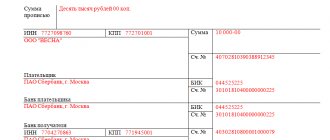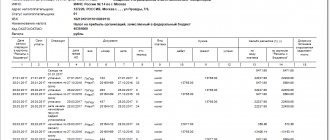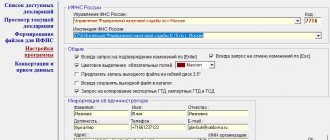What information is available
The concept of tax secrecy is defined in Article 102 of the Tax Code of the Russian Federation . This is any information received by tax, law enforcement, customs authorities, as well as extra-budgetary funds in relation to the payer of taxes, fees or insurance premiums. However, there are exceptions to this list of information, and their list is quite impressive.
Among other things, information about the amounts of taxes paid, arrears, including fines and penalties, tax violations, and so on is not a tax secret. This information may be published and used without restrictions.
In connection with the changes made in 2021, a number of data were removed from tax secrecy , which the Federal Tax Service began publishing on its Internet resource on August 1, 2021. The following information became available:
- applied special tax regimes;
- information on the participation of organizations in the consolidated group of taxpayers;
- information on the average number of employees of organizations.
As for the last parameter, information on the number of employees of the largest taxpayers, as well as entities whose activities are related to state secrets, is not disclosed.
Open state data of the Federal Tax Service of Russia by the Federal Tax Service
| No. | Data set name | Dataset Format | Number of downloads |
| 1 | Federal Information Address System Data Bank | XML | 15273 |
| 2 | Register of electronic document management operators | CSV | 33273 |
| 3 | Register of licenses for carrying out activities for the production and sale of counterfeit-proof printed products | XML | 4266 |
| 4 | Tax rates and benefits | XML | 15294 |
| 5 | Addresses and payment details of inspections | CSV | 101937 |
| 6 | List of subordinate organizations | CSV | 33828 |
| 7 | On debts on taxes and fees, insurance premiums, penalties, tax sanctions to the budget system of the Russian Federation | CSV | 7006 |
| 8 | Register of licenses for carrying out activities related to organizing and conducting gambling in bookmakers and sweepstakes | XML | 11247 |
| 9 | List of vacant positions in the state civil service in the territorial bodies of the Federal Tax Service of Russia | CSV | 15562 |
| 10 | Tax calendar | XML | 6329 |
| 11 | Addresses indicated during state registration as the location of several legal entities | CSV | 39788 |
| 12 | Information on large purchases | CSV | 5804 |
| 13 | Regional representative offices of the Federal Tax Service of Russia | CSV | 10556 |
| 14 | Directory “Codes of types of excisable goods” | CSV | 3900 |
| 15 | Directory of codes for places where a taxpayer submits a declaration | CSV | 3996 |
| 16 | Directory of codes defining the tax (reporting) period | CSV | 4492 |
| 17 | Directory of codes for objects of aquatic biological resources | CSV | 3808 |
| 18 | Directory of animal codes | CSV | 3862 |
| 19 | Directory of codes of objects of excise taxation of excisable goods | CSV | 3548 |
| 20 | Directory “Codes of grounds for applying the rate of 0 rubles fee for the use of objects of the animal world and objects of aquatic biological resources” | CSV | 3404 |
| 21 | Directory of benefits for paying state duty | CSV | 4132 |
| 22 | Directory “Transaction codes for value added tax” | CSV | 3893 |
| 23 | Directory “Value added tax transaction codes for transactions taxed at a tax rate of 0 percent” | CSV | 3750 |
| 24 | Directory of grounds for deferment (installments) of payment of State duty | CSV | 3347 |
| 25 | Directory “List of grounds for taxation of extracted minerals at a tax rate of 0 percent and other features | CSV | 3602 |
| 26 | Directory “Codes of types of entrepreneurial activity and values of basic profitability per unit of physical indicator” | CSV | 15943 |
| 27 | Information about individuals who are managers of several legal entities | CSV | 120406 |
| 28 | Information about individuals who are founders (participants) of several legal entities | CSV | 104440 |
| 29 | Legal entities whose executive bodies include disqualified persons | CSV | 105250 |
| 30 | Register of disqualified persons | CSV | 117297 |
| 31 | Tax base, income and expenses of payers of the unified agricultural tax | CSV | 5342 |
| 32 | Directory “Powers of a taxpayer’s representative” | CSV | 3381 |
| 33 | On the accrual and receipt of taxes, fees and other obligatory payments to the budget system of the Russian Federation (on the accrual of taxes and fees) (Form No. 1-NM) | CSV | 7388 |
| 34 | On the accrual and receipt of taxes, fees and other obligatory payments to the budget system of the Russian Federation (on the accrual of insurance premiums) (Form No. 1-NM) | CSV | 3079 |
| 35 | On the tax base and structure of tax charges paid in connection with the application of the simplified taxation system | CSV | 5193 |
| 36 | Classifier of errors in format-logical control of tax and accounting reporting files | CSV | 2866 |
| 37 | On the tax base and structure of charges for excise taxes on petroleum products | CSV | 1244 |
| 38 | Receipts of taxes, fees and other obligatory payments to the consolidated budgets of the constituent entities of the Russian Federation | CSV | 6986 |
| 39 | On debts on taxes and fees, penalties and tax sanctions to the budget system of the Russian Federation for the main types of economic activity | CSV | 5159 |
| 40 | On the results of the control work of the tax authorities | CSV | 6969 |
| 41 | Unified Register of Small and Medium Enterprises | XML | 42586 |
| 42 | Tax authorities addresses | CSV | 4063 |
| 43 | On the tax base and structure of charges for the single tax on imputed income for certain types of activities | CSV | 2132 |
| 44 | Directory of water use codes | CSV | 1215 |
| 45 | Directory of documents confirming benefits for paying state duty | CSV | 964 |
| 46 | On the tax base and structure of charges for mineral extraction tax | CSV | 1173 |
| 47 | On the tax base and structure of excise taxes on tobacco products | CSV | 1259 |
| 48 | On the tax base and structure of excise taxes on beer | CSV | 1239 |
| 49 | On the tax base and structure of excise taxes on alcohol, alcoholic and alcohol-containing products | CSV | 1213 |
| 50 | On the tax base and structure of charges for personal income tax withheld by tax agents | CSV | 2311 |
| 51 | On declaration of income by individuals | CSV | 3153 |
| 52 | On the structure of excise taxes on cars and motorcycles | CSV | 979 |
| 53 | On the tax base and structure of charges for corporate income tax | CSV | 2117 |
| 54 | On the tax base and structure of charges for water tax | CSV | 1457 |
| 55 | On the tax base and structure of charges for the use of objects of aquatic biological resources | CSV | 916 |
| 56 | On the tax base and structure of tax charges for the gambling business | CSV | 1136 |
| 57 | On arrears of penalties and tax sanctions to the budget system of the Russian Federation for the main types of economic activity | CSV | 961 |
| 58 | On debts for the unified social tax, contributions to state extra-budgetary funds, penalties and tax sanctions for main types of economic activity | CSV | 5 |
| 59 | About the accrual structure for value added tax | CSV | 2889 |
| 60 | Information on citizens' appeals to the Federal Tax Service of Russia | CSV | 2631 |
| 61 | On the tax base and structure of charges for transport tax (for transport tax of legal entities) | CSV | 402 |
| 62 | On the tax base and structure of charges for transport tax (for transport tax for individuals) | CSV | 461 |
| 63 | Key objects of social infrastructure of the Federal Tax Service of Russia | CSV | 240 |
| 64 | On the tax base and structure of charges for corporate property tax | CSV | 0 |
| 65 | State register of accredited branches, representative offices of foreign legal entities (RAFP) | ZIP | 596 |
| 66 | On the tax base and structure of land tax charges for legal entities | CSV | 54 |
| 67 | On the tax base and structure of charges for local taxes (land tax for individuals) | CSV | 420 |
| 68 | On the tax base and structure of assessments for local taxes (for personal property tax) | CSV | 0 |
| 69 | On the accrual and receipt of taxes, fees and other obligatory payments to the budget system of the Russian Federation (on the receipt of insurance contributions) (Form No. 1-NM) | CSV | 368 |
| 70 | On the accrued amounts for the payment of insurance contributions for compulsory social insurance for the main types of economic activity (Form No. 1-NOM) | CSV | 11793 |
| 71 | On accrued amounts for the payment of taxes and fees for the main types of economic activity (Form No. 1-NOM) | CSV | 47 |
| 72 | On the receipt of insurance contributions for compulsory social insurance for the main types of economic activity (Form No. 1-NOM) | CSV | 45 |
| 73 | On the receipt of taxes and fees to the consolidated budget of the Russian Federation for the main types of economic activity (Form No. 1-NOM) | CSV | 70 |
| 74 | Information on special tax regimes applied by taxpayers | XML | 58 |
| 75 | Information on participation in a consolidated group of taxpayers | XML | 28 |
| 76 | Information on the average number of employees of the organization | XML | 33 |
| 77 | Settled and impossible to collect debts on taxes, fees, insurance premiums, penalties and tax sanctions to the budget system of the Russian Federation for the main types of economic activity (4th, section 2) | CSV | 44 |
Statistical information on open data sets: The official website of the Federal Tax Service of Russia contains 77 data sets. The number of data sets presented in CSV format is 67, presented in XML format 9.
You can use the “Open State Data” provided by the Federal Tax Service (hereinafter - Federal Tax Service of Russia) in accordance with the rules approved by this license without concluding an agreement. The Federal Tax Service of Russia, when publishing open government data, grants the user a perpetual, free, non-exclusive right to use Open Data in accordance with the following requirements. Show details The Federal Tax Service of Russia is not responsible for the use of Open Data.
Open government data (hereinafter referred to as Open Data) is information about the activities of state bodies and local governments, posted on the Internet in the form of data arrays in a format that ensures their automated processing for reuse without prior modification by humans (machine-readable format), and under the terms of its free (free) use.
The standard conditions for the use of open data were approved by the protocol of absentee voting of the Government Commission for the Coordination of Open Government Activities dated September 19, 2016 No. 6.
Open license
You can use “Open Government Data” provided by the Federal Tax Service (hereinafter referred to as the Federal Tax Service of Russia) in accordance with the rules approved by this license without concluding an agreement.
The Federal Tax Service of Russia, when publishing open government data, grants the user a perpetual, free, non-exclusive right to use Open Data in accordance with the following requirements.
Reuse of information in accordance with this license (hereinafter referred to as the License).
Reuse of information in accordance with this license (hereinafter referred to as the License).
The Open Data user has the right:
- Reproduce, copy, publish and transmit Open Data;
- Disseminate and regroup Open Data;
- Adapt, modify, transform and/or extract information from Open Data;
- Use open data for commercial purposes when producing a new product and/or service.
The Federal Tax Service of Russia guarantees that Open Data is free of charge in accordance with the License.
The user has the exclusive right to process Open Data. With this processing, the User undertakes not to involve a third party in the processing process, and undertakes not to distort the content of the Open Data, its original source and the time of the last update.
Intellectual Property Rights The Federal Tax Service of Russia guarantees that Open Data posted on the official Internet site www.nalog.ru is not the Intellectual Property of a third party.
Compatibility of the License To facilitate the use of Open Data, this license has been developed in accordance with other licenses governing Open Data. This license does not conflict with the CC-BY (Creative Commons) and ODC-BY (Open Knowledge Foundation) licenses.
The Federal Tax Service of Russia is not responsible for the use of Open Data.
Internal regulations for the work of the Federal Tax Service of Russia with requests for errors in data sets received through feedback channels with interested reference groups and experts
About the use of site information
Publication format
Let us say right away that it is not so easy to obtain data about a specific taxpayer from the information on the Federal Tax Service website. The fact is that it is placed in the form of links to data archive packages, each of which contains files in XML format . The Federal Tax Service website provides a link to such a data set and a description of the file structure.
Thus, in order to find out how many employees work for a potential counterparty, you will have to process a huge amount of information. The same applies to the tax system. To read it in the xml file, you need to pay attention to the value of the attribute. For example, the entry “PriznUSN = “1”” means that the counterparty uses the “simplified” method. There are similar signs for UTII, Unified Agricultural Tax and production sharing agreement (PSA).
services for checking contacts , for example, Kontur.Focus, to obtain the same information All information that the Tax Service began providing on August 1 has already been uploaded to the service. To use them, just enter the TIN or the name of the counterparty in the search bar. In addition, the service will provide a lot of other information to conduct a comprehensive assessment of the counterparty.
Will there be complete transparency?
There is another opinion that there will still not be complete transparency. First of all, analysts point to large companies that also attract international investors, and quasi-state companies about which there is not enough information.
Subsidiaries of Gazprom, Surgutneftegaz and others, which move billions and do not always do it openly, are unlikely to become transparent by decision of the Federal Tax Service. Here decisions are made much higher. It is therefore expected that the approach to data publication will be selective.
The service is already available and can be explored at https://egrul.nalog.ru/. It is still difficult to find tax data. But there is a simple and clear video (bottom right in the Videos section) that shows what specific information is already or will be available in the near future.
What else will be publicly available?
Over time, the Federal Tax Service will also disclose other information that is no longer a tax secret. It will be published in accordance with order dated 05.30.18 No. ММВ-7-14/ [email protected] All details are in the following table.
Table. Federal Tax Service plans to publish information
| Publication date | Intelligence |
| October 1, 2021 |
|
| December 1, 2021 |
|
| 2019 |
|
Note! Information about debt that arose at the end of 2021 will only be published if it is not repaid by October 1, 2021 . The same applies to information about tax violations.
Application documents
The appeal itself can be written in free form. However, it is advisable to provide complete information about the applicant (TIN, address, passport details for individuals). It is important to provide details by which the person of interest can be reliably identified. For information on how to make a request, read the article “Federal Tax Service: extract from the Unified State Register of Legal Entities.”
You will also need to present a passport and power of attorney - if a representative is acting on behalf of the applicant, a document confirming payment of the fee.
After submitting the application, tax officials issue a receipt indicating the time when you need to come for the completed documents. The result of the provision of public services will be an extract, a certificate of absence of data, or a reasoned refusal to issue forms. A refusal can be appealed in court, but it is extremely rare for the Federal Tax Service to refuse to provide information.
What is “Open Sources of Information”
The law does not provide a clear official concept of “open sources of information”. There is a definition of “public information” (Article 17 of the 149th Federal Law “On Information, Information Technologies and Data Protection”). The data provided for by this norm is, of course, open.
In addition, for a legitimate debt collector, subject to certain conditions, the possibility of obtaining information to which access is limited is open. Such information can also be considered obtained from open sources.
Federal Tax Service: blacklist of companies
Tax debts are far from the only reason why people end up in the special registers of the Federal Tax Service.
For what reasons can companies or individuals be blacklisted:
- tax reporting has not been provided for more than a year,
- there are tax debts (more than 1 thousand rubles),
- the company is registered at the mass registration address,
- the company does not respond to the registration address,
- head of the company in the register of disqualified persons,
- the manager or founder is “noticed” in many legal entities.
Why do you need a certificate of open current accounts?
There are basically only two reasons why government agencies receive a certificate: control of financial condition and recovery of property.
But the account holders themselves also need these certificates for various reasons. A certificate from the tax office about open accounts is needed:
- for application to business plans;
- to provide information to partners when implementing joint projects;
- for a report on property and state of affairs when applying for a loan;
- to respond to demands from the prosecutor's office and the court;
- to sum up the results when a company is closed, divided or stopped;
- for internal control.
The latter is necessary in the absence of internal reporting or lack of trust in it.
A certificate of open accounts does not provide sufficient information about the assets of the enterprise. It does not indicate account balances. But this would be difficult to do if the accounts are not seized and funds flow through them. A certificate of availability of accounts provides information on the direction of the search, informs which credit institutions have the most liquid property of the organization, i.e. cash.









